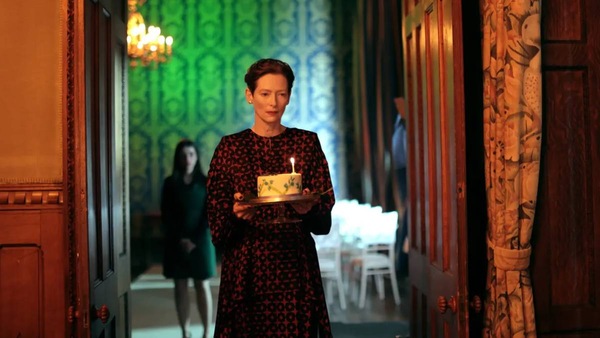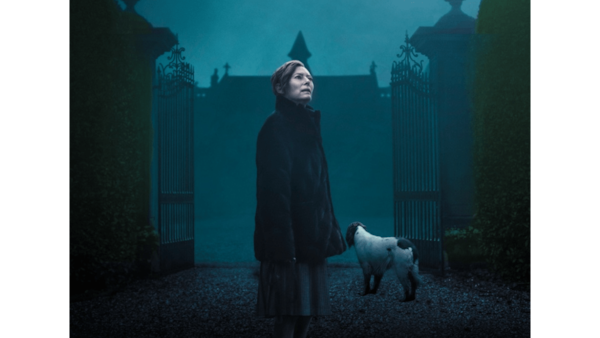The Eternal Daughter: Gothic Descent Into A Haunting Present & Past

Last Updated: 08.23 PM, Mar 14, 2023
ON A WINTRY NIGHT, a lone white taxi winds through a backwoods road hedged in by trees with gangly limbs and engulfed by a rolling shroud of fog. Headlights pierce through the shroud like ghostly orbs. Plaintive notes of a flute harmonise with the soft whistle of the wind. The taxi pulls into a stately mansion, refashioned as a B&B, with its passengers: two Tilda Swintons and a pet springer spaniel. One Swinton is middle-aged filmmaker Julie Hart. The other is Julie’s elderly mother Rosalind. The country retreat is meant to be a mother-daughter getaway to celebrate Rosalind’s birthday. At the same time, it offers a pretext for Julie to wheedle stories about the past from her mother for the next film she is working on.
Except, distractions come aplenty. The spooky atmospherics of the countryside are even more pronounced inside the hotel. Aside from the unfriendly receptionist (Carly-Sophia Davies) manning the front desk and the kindly groundskeeper (Joseph Mydell), there doesn’t appear to be anyone else. All sorts of strange goings-on keep Julie up at night: doors open by themselves, the vacant floors above creak and a loose window slams open and shut in the wind. When she goes to investigate, she sees a shadow of a figure standing behind a window. Ghostly echoes of the past merge with creative anxieties of the present in Joanna Hogg’s new memory piece, The Eternal Daughter.
The British writer-director examines the deep and abiding connection between mothers and daughters by tapping into the inherent gothic-ness of a memory piece. Julie’s creative process is framed as a haunting of her mind. The mansion and the surrounding estate are at once a physical place and a figurative structure that exists on the liminal border of memory and imagination. As a child, Rosalind had stayed at the mansion when it was the private residence of her aunt during World War II. Now the mansion, its hallways and its rooms are a repository of those childhood memories. “That’s what rooms do,” says Rosalind. “They hold these stories.” And what are ghosts if not a subconscious perception of mysteries from the past continuing into the present?

Between dinner conversations and dog walks, Julie attempts to capture the lingering traces of the past so as to memorialise her mother through her film. Another tender semi-autobiographical memoir from Hogg takes shape with a mother-daughter relationship as connective tissue. Rosalind and Julie are the same pair we met in The Souvenir and The Souvenir Part II, in which the former was played by Swinton and the latter by her own daughter Honor Swinton Byrne. The two films saw Hogg draw from her own life and interpersonal relationships for a sumptuous coming-of-auteur duology so to speak. Her on-screen proxy Julie was then a young writer-director still finding her artistic voice. The Eternal Daughter picks up years later with Julie now a more established artist. If Hogg refuses to call it The Souvenir: Part III, it is because she intends the film to be a standalone piece, an epilogue rather than a threequel.
With Swinton taking over her daughter’s role besides reprising her own from The Souvenir films, Hogg and her DoP Ed Rutherford shoot the double act in close-up and medium shot/reverse shots. This illusion is pulled off with unshowy precision. Swinton is no stranger to playing multiple roles, having done so, quite remarkably, in Orlando (1992), Okja (2017) and Suspiria (2018). Here, she distinguishes the mother-daughter personalities within a relationship of shared fears and loneliness through a measured mix of emotion, movement and spirit. The mirror effect of two Swintons not only evokes the motif of the Gothic double but also plays into the idea of daughters seeing their mothers in themselves. Or as Hogg calls it, “the eternal daughter.” Furthermore, when we are writing about ourselves, we are in essence doubling ourselves. Even when we are writing about others, we are writing about ourselves in terms of our relationship with them.
Throughout the film, we only see Julie and Rosalind face to face, never side by side. This choice of framing emphasises a distance between the pair. As Julie compels the reluctant Rosalind to reflect upon old memories and turns on the digital recorder in secret, she expresses concern over using her mother as source material for her art. “I’m not sure I feel I have a right to do such a thing,” she worries. “It feels like trespassing.” Where in a classic Gothic drama a woman might descend down a staircase into the unknown, Julie here makes a descent into her mother's past. In the process, she makes a journey of her own down the long hallway into the inner life of an artist. And just as some doors lead to nowhere or don’t open at all, some questions lead to answers beyond comprehension or no answers at all.
